I discovered this tip via the Mac App Store. At first, I thought, "I know all of these already", but I learned a new trick today. As I expected, Command+Control+Shift-4 grabs a section of the screen and stores it to the clipboard.
Tag: Mac App Store
JPEGmini
This blog has a lot of images from screen shots and iPhone and DSLR photos. All of the images are reduced in size to fit within the 920 pixel grid that I use for my theme but even then some images can be quite large. I want to maintain high quality images while reducing the bandwidth needed to render pages.
JPEGmini promises to do just that -- reduce the size of JPEG images without any noticeable loss in quality.
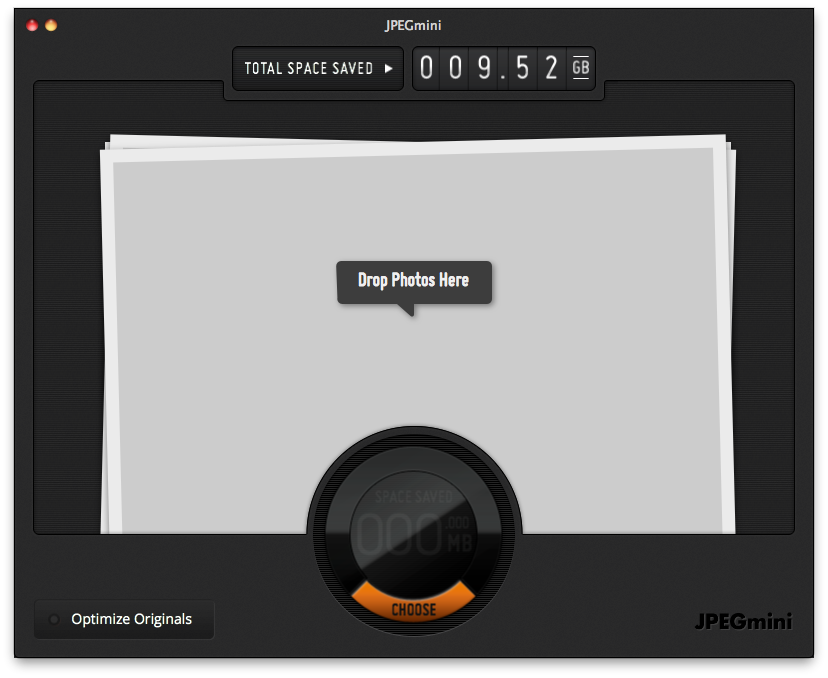
The software is easy to use. Once installed the user can either drop a set of images onto the rectangular area or click choose to navigate to a folder containing images. I had a bunch of images that I had uploaded to Dropbox on my iPhone. JPEGmini reduced the images to about 1⁄4 of the size.
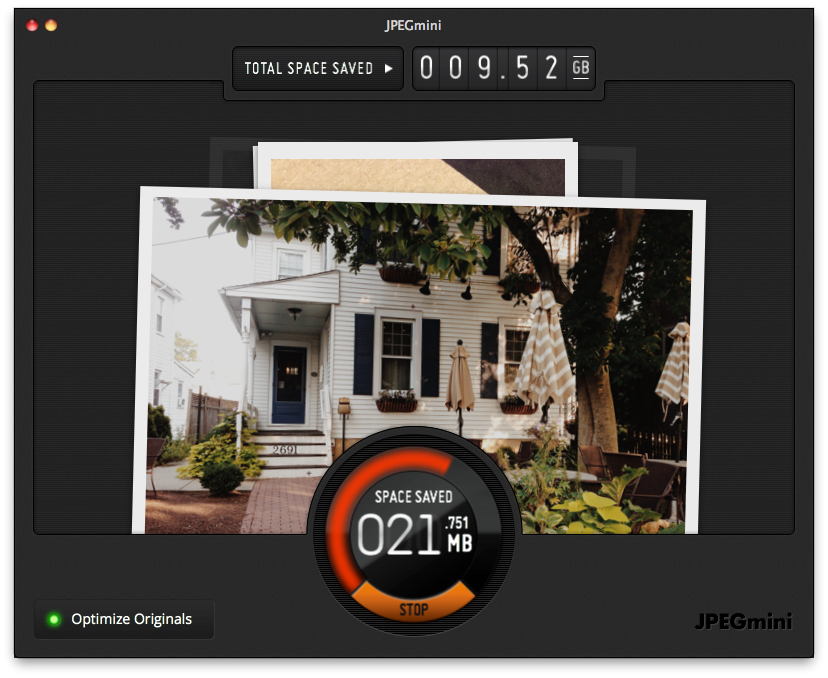
As the application works on your photos it will report back how much space is being saved.

Once complete JPEGmini will let the user know how much the files were compressed. I noticed that the application was smart enough to traverse directory trees.
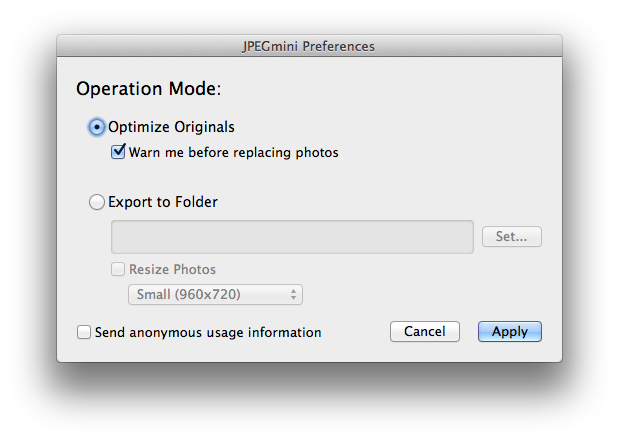
The application has few options. You can choose to overwrite your originals with the compressed version or save the compressed images to another folder. JPEGmini remembers which photos have already been processed so there is not danger of compressing the same file repeatedly. When you choose to save compressed images to a new folder you can also chose to re-size the images.

The application is easy to use and does it's one thing simply. I've started using it on all the images I upload to my blog. JPEGmini is $20 in the Mac App Store. A Windows version is also available.
OS X Mountain Lion
The word is out, Apple will release a new version of OS X this summer. I got news of this from a friend who is a Mac developer. The interesting thing he pointed out to me was that Apple dropped the word "Mac" from the OS. It's just OS X Mountain Lion. After looking over the previewed feature list I can understand why. OS X Mountain Lion is meant to be a complement to the iPad and iPhone.
When Apple realeased iOS last year, it also introduced iCloud. iCloud allows seamless sync of contact, calendar, mail, photos, and documents (iWork) between iOS devices. Add a contact on your iPhone and immediately have it appear on your iPad. Take a photo with your iPhone and seconds later watch it on your iPad. Apple did bring some of the sync capability to OS X Lion but it was limited to contacts and calendar. I could not, for example, create a document in Page on the Mac and continue editing on my iPad. First, I had to upload it to iCloud via Safari. With OS X Mountain Lion, the circle is complete.
One key addition is Documents in the Cloud. In iOS 5, apps like Pages take advantage of automatic saving to iCloud. With OS X Mountain Lion, the circle is complete as all documents in the iWork suite of apps will save this way as well. (via TechCrunch)
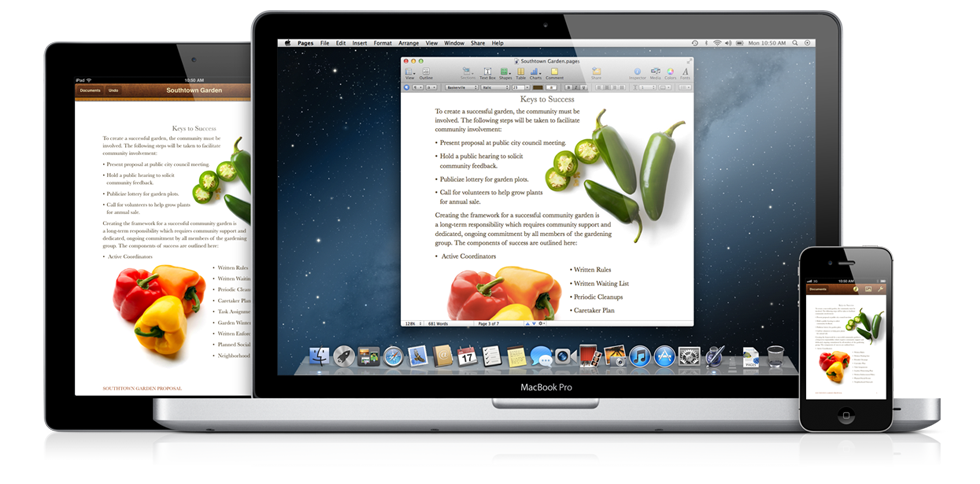
In OS X Mountain Lion, sign in once with your Apple ID and iCloud is automatically set up across your Mac.1 That means right away iCloud keeps your mail, calendars, contacts, documents, and more up to date on every device you use. So when you add, delete, or edit something on your Mac, it happens on your iPad, iPhone, and iPod touch. And vice versa. (source Apple)
So now, I can work from any Apple device! I expect third-party app developers will update their OS X and iOS apps to take advantage of the feature. OS X Mountain Lion is starting to look like iOS.
Messages/Reminders/Notes/Notifications
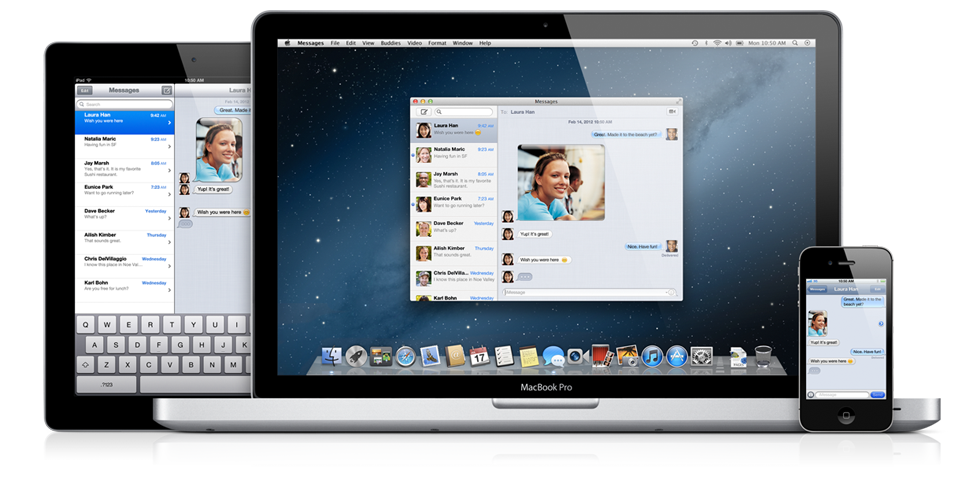
The three apps - Messages, Reminders, Notes - were introduced with iOS 5. On iOS, Messages allow iPhone (iPad) users to text each other for free. The Notes and Reminders app on iOS 5 sync back to the notes and reminders section of the OS X Mail client. With Mountain Lion, this apps gets separate treatment as a stand alone app along with Reminders.
iOS 5 introduced a new notification system for the iPhone and iPad. This notification system now comes to OS X. I wonder what the Growl developers are thinking right now?
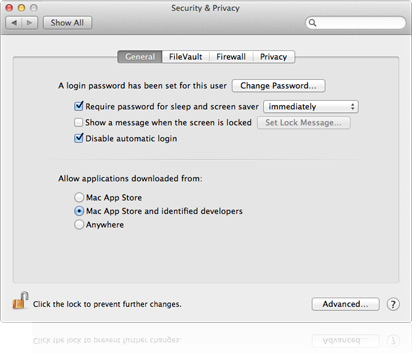
I don't know too much about this one except that Apple will require developers who want to sell apps in the Mac App Store to register and digital sign their software. One notable feature is that users will get to choose whether to allow apps developed independently of the Mac App Store onto their Macs.
Apple wants to help you steer clear of malware even when you download applications from places other than the Mac App Store. That’s why Apple created the Developer ID. As part of the Mac Developer Program, Apple gives developers a unique Developer ID for signing their apps. A developer’s digital signature allows Gatekeeper to verify that their app is not known malware and that it hasn’t been tampered with. If an app doesn’t have a Developer ID associated with it, Gatekeeper can let you know before you install it. It’s another step Apple takes to keep your Mac safe. Apple


